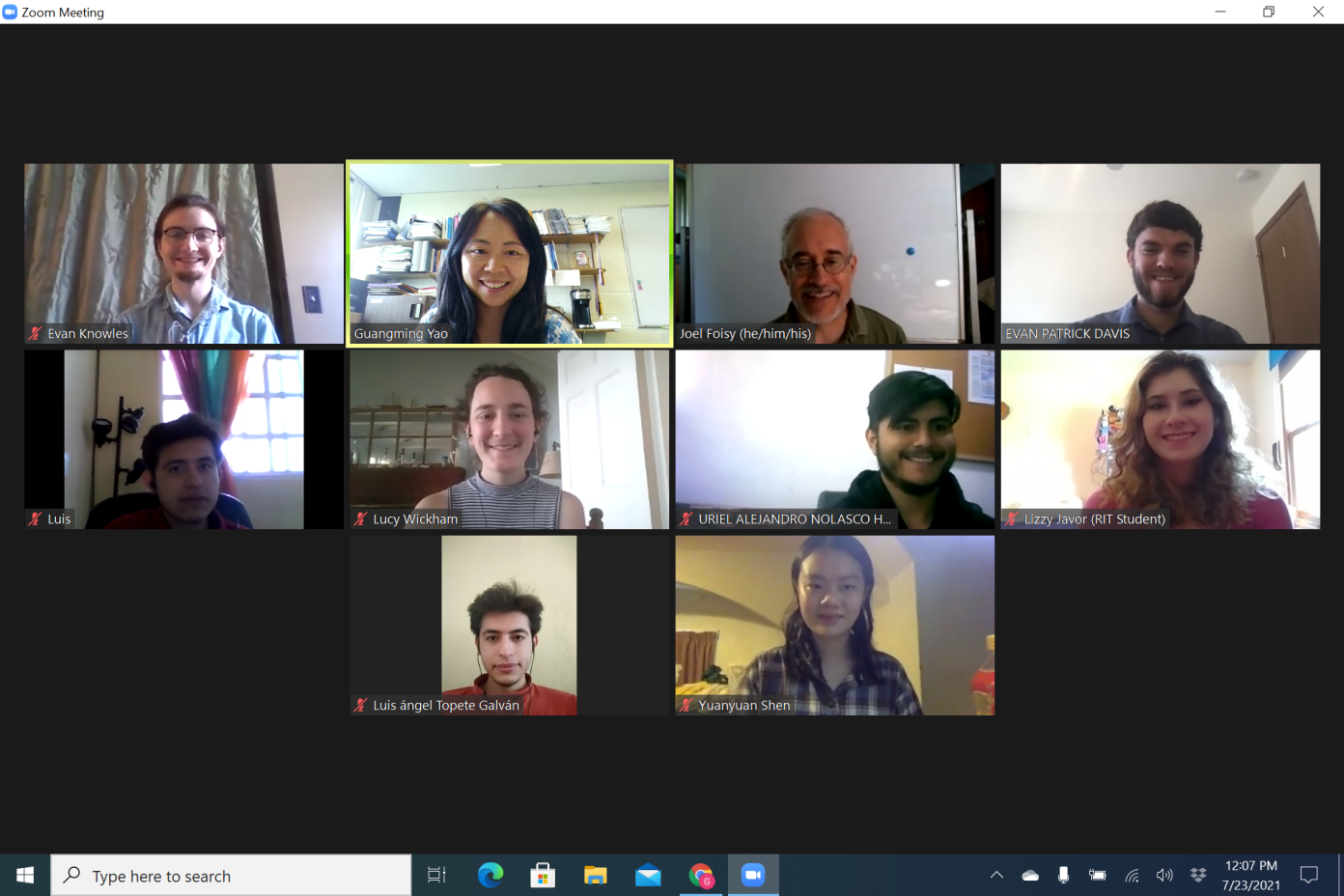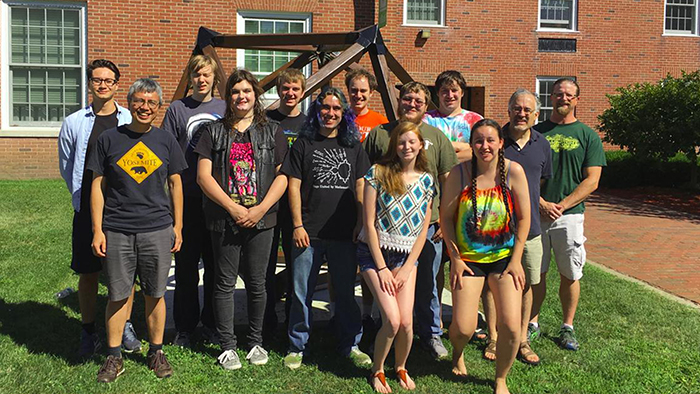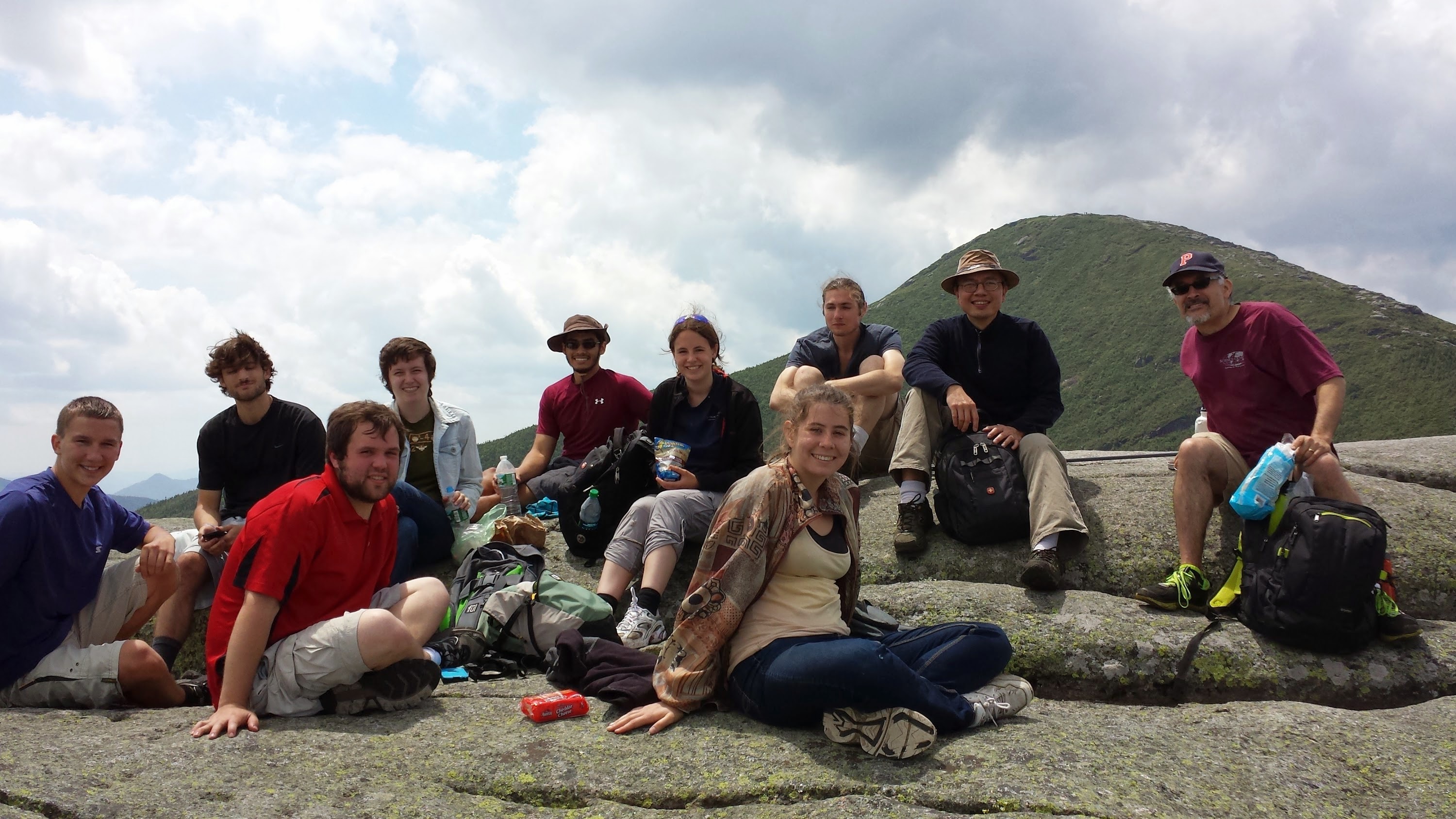Research Experience for Undergraduates (REU) in Mathematics
with support from the National Security Agency
Dr. Joel Foisy, SUNY Potsdam and Dr. Guangming Yao, Clarkson University
Pictures of Clarkson University and SUNY Potsdam
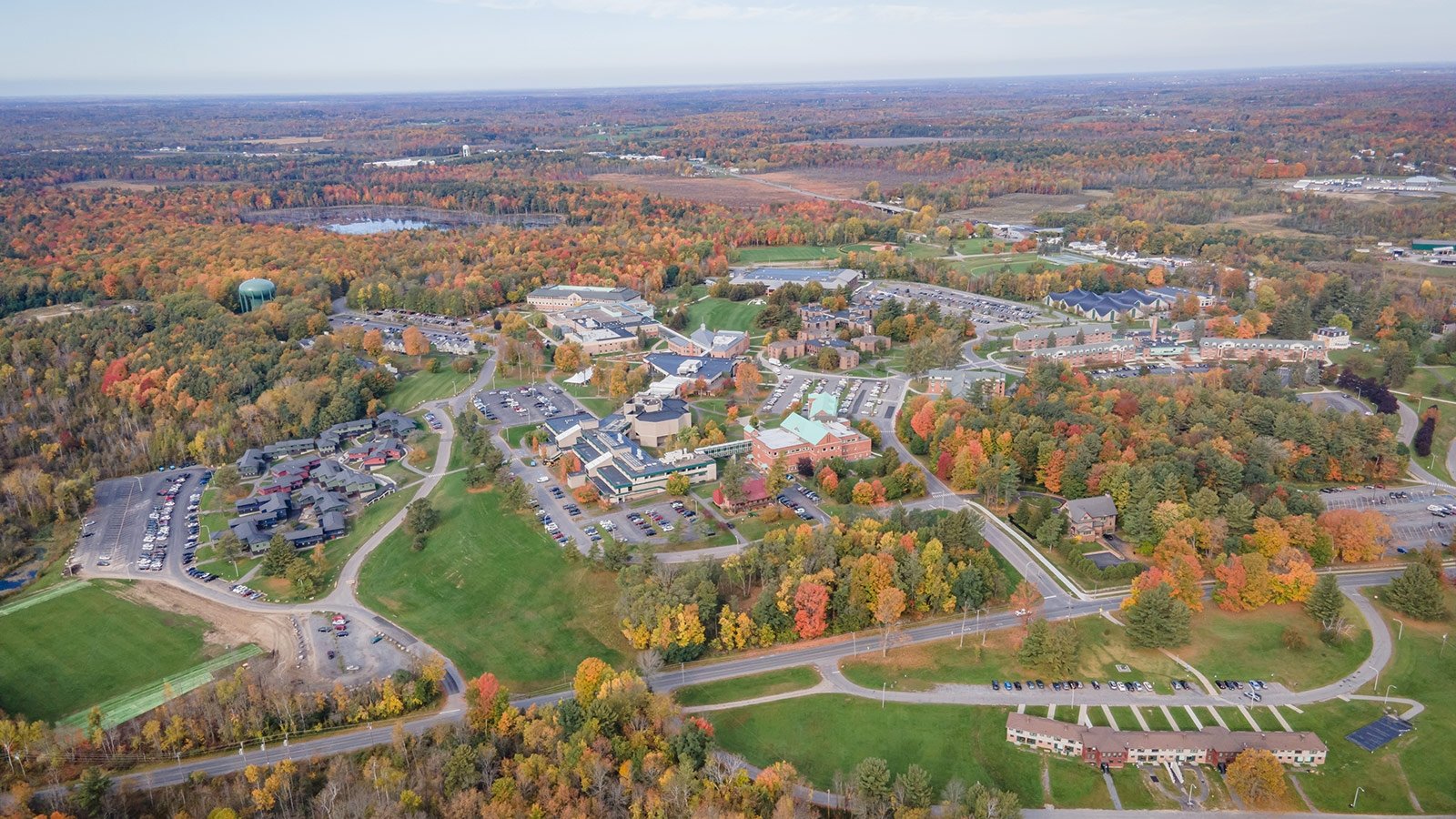

Important Dates:
REU Participants Arrive on Campus: Monday, May 23, 2022
REU Program starts: Tuesdsay, May 24, 2022
Final Day of REU Program: Friday, July 15, 2022
RAPS Conference: Friday, July 29, 2022
Last day to move out: Monday, Aug 1, 2022
Important Links:
Campus map and parking Lot (free summer parking)
About facility hours
Dragon Boat Festival, July 16
Science Center Roof Construction -- Noisy for a few days
Local restaurants
Woodstock map
Woodstock Building 1, pictures of your apartments
About Woodstock (May 23-- August 1)
Bus Schedule (look for Clarkson shuttle)
Reimbursement
PeopleSoft at Clarkson
Local grocery stories:
Walking: The Kinney Drugs, Dunkin Donuts, Potsdam IGA and Potsdam Food Co-op
In town: Price Chopper and the Save-A-Lot grocery stores
Driving: a WalMart Supercenter, Aldis
NSF REU Site: High Performance Computing with Engineering Applications
MBioTS Research Experience for Undergraduates (REU)
Dr. Guangming Yao, Clarkson University
Numerical solutions to high-dimensional stochastic differential equations
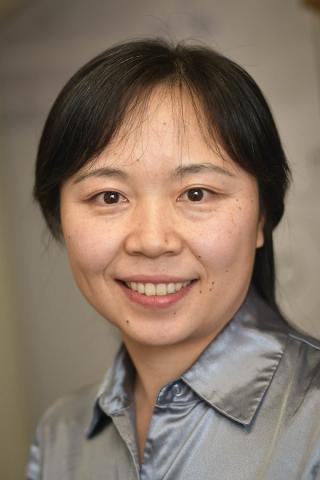
Mathematical models described by partial differential equations (PDEs) have been a necessary tool to model nearly all physical phenomena in science and engineering. Due to the growth of the complexity in emerging technologies, the increase in the complexity of the PDEs for realistic problems become inevitable. Some of the complexities are, for example, complicated domains, high-dimensional spatial domains, multiscale, large-scale problems, etc. This project will develop a new algorithm for solving partial differential equations (PDEs) in high dimensions by solving associated backward stochastic differential equations (BSDEs) using neural networks, as is done in deep machine learning. Another option is to employ radial basis functions to reduce the dimensions in the numerical simulation. The project can be future enhanced by adding complicated computational domains, large scale problems with or without multiscale feature. If a particular student became interested in parallel computing, there could be a productive a collaboration between this REU site and the NSF REU Site: High Performance Computing with Engineering Applications, led by the Department of Electrical and Computer Engineering, Clarkson University, Potsdam, NY.
Dr. Joel Foisy, SUNY Potsdam
Links in embedded graphs

A spatial embedding of a graph is a way to place a graph in space, so that vertices are points and edges are arcs that meet only at vertices. Mathematicians have studied graphs that are intrinsically linked: that is, in every spatial embedding, there exists a pair of disjoint cycles that form a nonsplittable link. Sachs and Conway and Gordon showed that the complete graph on 6 vertices is intrinsically linked. More recently, people have studied graphs that have non-split links with more than 2 components, as well as knotted cycles, in every spatial embedding. We will use tools from graph and knot theory. Experience in these areas is not required.
Dr. Sumona Mondal, Clarkson University
Using Comorbidities, Demographic, and Socioeconomic Data to Predict Onset of Rheumatoid Arthritis

Rheumatoid arthritis (RA) is an autoimmune inflammatory joint disease with a complex pathophysiological basis. The chronic and debilitating nature of the disease requires diagnosis and management under close rheumatologist supervision, however, a severe shortage of rheumatologists in the rural area creates barriers to proper care. Smart devices provide the opportunity to monitor individuals for risk of RA. To make optimal use of the data gathered by modern smart devices in RA risk assessment, it is necessary to mine predictable factors that have high associations with RA. Preliminary statistical studies conducted by Prof. Sumona Mondal (Mathematics, Clarkson University) and his collaborator on this project Prof. Shantanu Sur (Biology, Clarkson University) have indicated that factors related to human lifestyles such as high body mass index and depression, and demographic factors such as gender and ethnicity show correlation with RA, providing the potential to use these factors in smart RA risk prediction. As part of this research, the REU student will investigate the association of socioeconomic factors with RA and will develop learning-based algorithms to improve rural RA care by identifying critical factors associated with the disease and building predictive models.
Dr. Prashant Athavale, Clarkson University
Hybrid inpainting method

An image can be viewed as a function. The image data can be damaged and part of the image is destroyed. Inpainting is a problem of filling in missing part of an image. There exist various ways to fill in missing information in the image processing literature. These methods can be categorized into variational based and exemplar-based inpainting methods. In variational methods we solve a minimization problem to flow the information from the boundary into the missing region. The variational methods are successful when the missing regions are composed of large number of small disconnected regions. In exemplar based methods parts of the missing region are systematically replaced by a similar patch from the known part of the data. The exemplar-based methods are often employed when the missing regions are composed of small number of large regions. The order of filling the data is crucial in such methods. In this project, we would like to explore whether these two approaches could be combined to produce better inpainting results. We intend to use the variational method to decide the order of inpainting in the exemplar method.
REU in Math Calendar View
Dr. Guangming Yao, Clarkson University
Numerical solutions to high-dimensional stochastic differential equations

Mathematical models described by partial differential equations (PDEs) have been a necessary tool to model nearly all physical phenomena in science and engineering. Due to the growth of the complexity in emerging technologies, the increase in the complexity of the PDEs for realistic problems become inevitable. Some of the complexities are, for example, complicated domains, high-dimensional spatial domains, multiscale, large-scale problems, etc. This project will develop a new algorithm for solving partial differential equations (PDEs) in high dimensions by solving associated backward stochastic differential equations (BSDEs) using neural networks, as is done in deep machine learning. Another option is to employ radial basis functions to reduce the dimensions in the numerical simulation. The project can be future enhanced by adding complicated computational domains, large scale problems with or without multiscale feature. If a particular student became interested in parallel computing, there could be a productive a collaboration between this REU site and the NSF REU Site: High Performance Computing with Engineering Applications, led by the Department of Electrical and Computer Engineering, Clarkson University, Potsdam, NY.
Dr. Joel Foisy, SUNY Potsdam
Links in embedded graphs

A spatial embedding of a graph is a way to place a graph in space, so that vertices are points and edges are arcs that meet only at vertices. Mathematicians have studied graphs that are intrinsically linked: that is, in every spatial embedding, there exists a pair of disjoint cycles that form a nonsplittable link. Sachs and Conway and Gordon showed that the complete graph on 6 vertices is intrinsically linked. More recently, people have studied graphs that have non-split links with more than 2 components, as well as knotted cycles, in every spatial embedding. We will use tools from graph and knot theory. Experience in these areas is not required.
Dr. Sumona Mondal, Clarkson University
Using Comorbidities, Demographic, and Socioeconomic Data to Predict Onset of Rheumatoid Arthritis

Rheumatoid arthritis (RA) is an autoimmune inflammatory joint disease with a complex pathophysiological basis. The chronic and debilitating nature of the disease requires diagnosis and management under close rheumatologist supervision, however, a severe shortage of rheumatologists in the rural area creates barriers to proper care. Smart devices provide the opportunity to monitor individuals for risk of RA. To make optimal use of the data gathered by modern smart devices in RA risk assessment, it is necessary to mine predictable factors that have high associations with RA. Preliminary statistical studies conducted by Prof. Sumona Mondal (Mathematics, Clarkson University) and his collaborator on this project Prof. Shantanu Sur (Biology, Clarkson University) have indicated that factors related to human lifestyles such as high body mass index and depression, and demographic factors such as gender and ethnicity show correlation with RA, providing the potential to use these factors in smart RA risk prediction. As part of this research, the REU student will investigate the association of socioeconomic factors with RA and will develop learning-based algorithms to improve rural RA care by identifying critical factors associated with the disease and building predictive models.
Dr. Prashant Athavale, Clarkson University
Hybrid inpainting method

An image can be viewed as a function. The image data can be damaged and part of the image is destroyed. Inpainting is a problem of filling in missing part of an image. There exist various ways to fill in missing information in the image processing literature. These methods can be categorized into variational based and exemplar-based inpainting methods. In variational methods we solve a minimization problem to flow the information from the boundary into the missing region. The variational methods are successful when the missing regions are composed of large number of small disconnected regions. In exemplar based methods parts of the missing region are systematically replaced by a similar patch from the known part of the data. The exemplar-based methods are often employed when the missing regions are composed of small number of large regions. The order of filling the data is crucial in such methods. In this project, we would like to explore whether these two approaches could be combined to produce better inpainting results. We intend to use the variational method to decide the order of inpainting in the exemplar method.
REU in Math Calendar View
Student Activities:
Weekly invited speakers, Biweekly group presentationas, Weekly free group lunch, Outdoor activities, and etc.
Small group meetings will be held in individual small classrooms: Mondal(SC356), Athavale(SC354), Foisy (SC348), Yao(SC342), graduate student office SC388
Zoom Link for remote participants
Link to the shared folder
Week 1, 5/23--5/27
Mon, 5/23, Move-in date, Lending Cardboar group visit @ 4pm, Grocery run @4:30pm
Tue, 5/24, Park Bros. Bagels for group breakfast @9:30am, Orientation @ 10am in SC356, Group Lunch @ 12pm in SC356
Wed, 5/25, small group meeting, hike @5p with Dr. Blair Madore
Thur, 5/26, small group meeting
Friday,5/27, Seminar talk and group lunch @11am in SC362, Statistics in Pharmaceutical Development and Manufacturing, Dr. Veroni Jayawardana, PhD, Senior Scientist, West Point, PA, Group lunch, Statistics workshop (Dr. Sumona Mondal and Vijay Kumar) 1pm-5pm
Week 2, 5/30--6/3
Mon, 5/30, Memorial day break, Picnic @ Pine Street Arena 12pm--3pm
Tue, 5/31, small group meeting
Wed, 6/1 small group meeting
Thur, 6/2small group meeting
Friday,6/3 Seminar Talk and group lunch, 11am, SC356, Symmetry-Preserving Neural Networks for Scientific Computing Dr. Jiequn Han, Research Fellow, Center for Computational Mathematics, Flatiron Institute/Simons Foundation Group lunch Group Presentations, 1pm-3pm
Week 3, 6/6--6/10
Mon, 6/6small group meeting, Hiking with Prof. Foisy @5PM, Stone Valley
Tue, 6/7small group meeting
Wed, 6/8small group meeting
Thur, 6/9 small group meeting
Fri, 6/10 Seminar Talk and group lunch, 11am, CAMP 176, Dr. Devin Kapper, Senior Data Analyst, IXIS Digital, LLC. Modeling and Statistics in Digital Marketing and Business Strategies Group lunch
Sat, 6/11 Canoeing on Raquette River @3PM--5PM
Week 4, 6/13--6/17
Mon, 6/13,small group meeting
Tue, 6/14, small group meeting
Wed, 6/15, small group meeting Hiking Azure Mountain with Dr. Foisy
Thur, 6/16, 8:30AM--11AM, SC342 , Dr. Nabendu Pal, Professor of Statistics in the Department of Mathematics, University of Louisiana at Lafayette (ULL), Workshop on Regression: From Basics to Somewhat Advanced Level.
Thur, 6/16, Seminar Talk and group lunch, 11am, SC356 , Dr. Wen Li, Assistant Adjunct Professor, Department of Mathematics, UCLA. Title: Simulation and analysis of 3D micro-encapsulation using efficient threshold dynamics. Group lunch
Fri, 6/17, Group Presentations, 9:30am-11am
Fri, 6/17, 11am, SC356, Dr. Nabendu Pal, Professor of Statistics in the Department of Mathematics, University of Louisiana at Lafayette (ULL), Title: Regression Under Skew-Normal Error Model, and Predicting Arsenic from Geographic Characteristics in the Mekong Delta Regions. Group lunch
Week 5, 6/20--6/24
Mon,6/20, small group meeting
Tue, 6/21, small group meeting
Wed, 6/22, small group meeting, Strawberry picking @2PM at Martin's
Thur, 6/23, small group meeting
Fri, 6/24 group lunch and Jeopardy! @ 1PM in SC356 with Dr. Blair Madore, Hike the Red Sandstone trail @4PM
Week 6, 6/27--7/1
Mon, 6/27, small group meeting
Tue, 6/28, small group meeting
Wed, 6/29, small group meeting, Graduate School Panel @10am in SC356, Waterfalls of Tooley Pond Rd @4PM
Thur,6/30, small group meeting
Fri, 7/1, Group Presentations, 9:30ampm-11am Invited Speaker and group lunch @11am, SC356, Dr. Leanne Merrill, Western Oregon University
Sat, Trip to Montreal organized by students
Week 7, 7/4--7/8
Mon, 7/4, Independence Day Picnic
Tue, 7/5, small group meeting
Wed, 7/6, small group meeting room change SC356--> SC160, SC354-->SC162
Thur,7/7, small group meeting, Hike Mount Arab with Dr. Foisy and Dr. Wells(?) @ 4PM
Fri, 7/8, small group meeting room change SC356--> SC160, SC354-->SC162, Seminar talk and group lunch@ 11am SC160, Kelsey Wells, NSA, The Secret Lives of Mathematicians.
Week 8, 7/11--7/14
Mon, 7/11, Seminar Talk and group lunch @11am SC356, Dr. Adam Cruziger, Hike Stone Valley from the Brown's Bridge East entrance@4pm
Tue, 7/12, small group meeting
Wed, 7/13, small group meeting
Thur, 7/14, small group meeting, Seminar Talk and group lunch, 11am, SC356, Dr. Dan Look, St. Lawrence University
